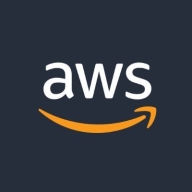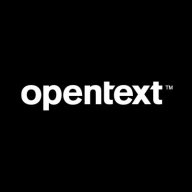

ArcSight Enterprise Security Manager ESM and AWS Security Hub are major contenders in the cybersecurity landscape. Users have expressed greater satisfaction with AWS Security Hub's scalability and ease of integration, indicating it may have the upper hand.
Features: ArcSight ESM offers comprehensive threat detection, incident management, and robust functionalities. AWS Security Hub provides seamless integration with AWS services, enhancing operational efficiency and scalability.
Room for Improvement: ArcSight ESM needs better analytics, more frequent updates, and improved user interface. AWS Security Hub users suggest enhancing multi-tenancy support, advanced customization options, and reporting capabilities.
Ease of Deployment and Customer Service: ArcSight ESM's deployment can be complex and time-consuming, but customer service is responsive. AWS Security Hub features a quicker deployment process and benefits from AWS's extensive customer service resources.
Pricing and ROI: ArcSight ESM's initial setup costs are high but justified by its extensive feature set. AWS Security Hub's pricing is more competitive; users achieve ROI sooner due to lower ongoing costs and faster time to value.
| Product | Market Share (%) |
|---|---|
| AWS Security Hub | 4.1% |
| Wiz | 19.8% |
| Prisma Cloud by Palo Alto Networks | 10.7% |
| Other | 65.4% |
| Product | Market Share (%) |
|---|---|
| OpenText Enterprise Security Manager | 1.6% |
| Wazuh | 9.3% |
| Splunk Enterprise Security | 8.7% |
| Other | 80.4% |


| Company Size | Count |
|---|---|
| Small Business | 10 |
| Midsize Enterprise | 5 |
| Large Enterprise | 12 |
| Company Size | Count |
|---|---|
| Small Business | 37 |
| Midsize Enterprise | 14 |
| Large Enterprise | 57 |
AWS Security Hub is a comprehensive security service that provides a centralized view of security alerts and compliance status across an AWS environment. It collects data from various AWS services, partner solutions, and AWS Marketplace products to provide a holistic view of security posture. With Security Hub, users can quickly identify and prioritize security issues, automate compliance checks, and streamline remediation efforts.
The service offers a range of features including continuous monitoring, threat intelligence integration, and customizable dashboards. It also provides automated insights and recommendations to help users improve their security posture. Security Hub integrates with other AWS services like Amazon GuardDuty, AWS Config, and AWS Macie to provide a unified security experience. Additionally, it supports integration with third-party security tools through its API, allowing users to leverage their existing security investments.
With its user-friendly interface and powerful capabilities, AWS Security Hub is a valuable tool for organizations looking to enhance their security and compliance posture in the cloud.
OpenText Enterprise Security Manager enables real-time threat detection through scalable and adaptable solutions, integrating seamlessly with multiple platforms for complex security scenarios across different environments.
OpenText Enterprise Security Manager offers extensive security monitoring capabilities, combining log analysis and incident management to enhance cybersecurity and compliance. Its powerful event correlation engine provides real-time alerts for rapid incident response. Users benefit from customizable dashboards and comprehensive log collection, making it a significant tool in the SIEM market. Flexible deployment options cater to both on-premises and cloud environments, supporting enterprises in managing IT infrastructure and threat detection efficiently.
What are the key features of OpenText Enterprise Security Manager?In industries such as finance, healthcare, and energy, OpenText Enterprise Security Manager is implemented for monitoring critical systems and ensuring compliance with regulatory needs. Enterprises leverage its capabilities for forensic investigations and active threat management, serving as a central hub for cybersecurity operations across diverse IT infrastructures.
We monitor all Cloud Security Posture Management (CSPM) reviews to prevent fraudulent reviews and keep review quality high. We do not post reviews by company employees or direct competitors. We validate each review for authenticity via cross-reference with LinkedIn, and personal follow-up with the reviewer when necessary.